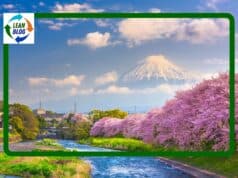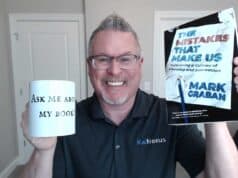Here's a question from Gerry, a blog reader:
Once you do a 2 or 3 day Value Stream Mapping event, would you do another event on the same process to refine it even more? One of our CI / Lean coordinator suggests that you would “spin” or do another VSM up to 6 times before you have all the waste removed. This coordinator is not a seasoned lean facilitator and I believe he focus on work scope reduction to much.
I wrote back to him and said:
Well, it depends. I would never have a set goal for the # of Value Stream Mapping or Kaizen events needed in an area. For example, why would you keep working in an area that was no longer your biggest business problem? If I had limited support resources, I'd focus them on my biggest opportunity for improving quality, customer service, etc. When I work in an area, I'd try to teach them tools to keep kaizening their process in an ongoing basis.
Thinking about this some more, I would also caution against an over reliance on VSM or Kaizen Events for driving improvement. VSM's are certainly a helpful tool and Kaizen Events can help, but those can't be your only improvement mechanism. As I started to say in the last paragraph, you have to get ALL of your employees engaged in continuous improvement and daily kaizen activities. That activity should NEVER stop, since you'll always have waste and have to push toward continuous improvement.
But, at some point, your formal VSM/Kaizen activity should move onto a new area or an area that is a bigger problem for the business.
Does anyone else have a response for or advice for Gerry and his organization?
Subscribe via RSS | Lean Blog Main Page | Podcast | Twitter @MarkGraban
Please scroll down (or click) to post a comment. Connect with me on LinkedIn.
Let’s build a culture of continuous improvement and psychological safety—together. If you're a leader aiming for lasting change (not just more projects), I help organizations:
- Engage people at all levels in sustainable improvement
- Shift from fear of mistakes to learning from them
- Apply Lean thinking in practical, people-centered ways
Interested in coaching or a keynote talk? Let’s talk.
Join me for a Lean Healthcare Accelerator Trip to Japan! Learn More










I agree, it depends on the situation/process, and I don’t advocate hitting a target # of VSM’s, either.
Your current state map is just that – your current state. It will change as you begin to make improvements to the process and move toward your desired future state.
When should you re-map? Once you’ve made the desired improvements to areas that were identified as critical or priority (“kaizen bursts” or “clouds” or whatever you’ve called them) would be a good time. That could be in as little as 3 months or as long as a year. It depends on your process, your planning, and your execution. Are you doing what you set out to do? If not, why? What needs to change? If you are, why? What do you need to keep doing to continue getting the desired results?
You may find that 60 days into your improvement efforts you need to regroup and rethink your plans. Maybe you’re completely off track and need to remap and set out a new direction. Maybe you’ve been so successful that you’ve overrun your objectives (this could be good or bad, again depending on the total process/situation).
Your planning and implementation should include PDCA cycles on your planning and implementation. That will help you decide if and when to remap. This is where having a good coordinator/teacher/sensei pays off. (S)he should be asking you questions that are making you revisit – at least in your own mind – your planning, implementation, and goals to make sure you accomplish what you set out to accomplish.
If you have had a significant change or a series of changes that results in a significant shift from your previous “Current State,” or if management has deicded on a major shift in business, then you should re-map. If your map is difficult to read as you have made a lot of little changes, you may want to walk the process and do a global update.
A fixed number of revisions or a fixed period for revisions is an interesting concept that may go into the L.A.M.E. handbook. In Five Why’s, five is just a suggested starting point, not a definitive number of iterations.
The whole VSM movement originally had good intentions, but the sub-culture and highly profitable industry that has come from it is losing its way.
Here is a fact: there are no Value Stream Maps or Value Stream Managers at Toyota. There, what is known as “Value Stream Maps” in the world, is called “Material and Information Flow Analysis” and is often a single-event analysis for parts of the system or a process. It’s not a department requiring a “VSM” manager.
Material and Information Flow Analysis not only looks at information flow upstream (Kanban) and material flow downstream (the line starts from the end at Toyota), but also looks at human motion.
Agree with what Pete says above – at the end of the day Value Stream Mapping is just a tool – and there are many improvement tools out there. However saying that is usefull in that it’s relatively quick to learn and if your facilitating a workshop that doesnt have many “lean literate” colleagues you could argue that it’s best just to use a small set of easy to use tools which I consider VSM to be.
In our experience of using VSM – we would focus on one business problem – and run a VSM event over the course of a week – capturing the quick wins (by focusing on QCD) and targeting the longer wins with improvement activity headed by our Business systems team – we’d then move on to other processes. We do this to ensure that we keep momentum and that you should hit the key issues within the week.
For those that may be interested we’re collating a value stream mapping resource center at our site – it’s in it’s early days but it would be good to get some case studies linked if anyone would be interested!
Comments are closed.